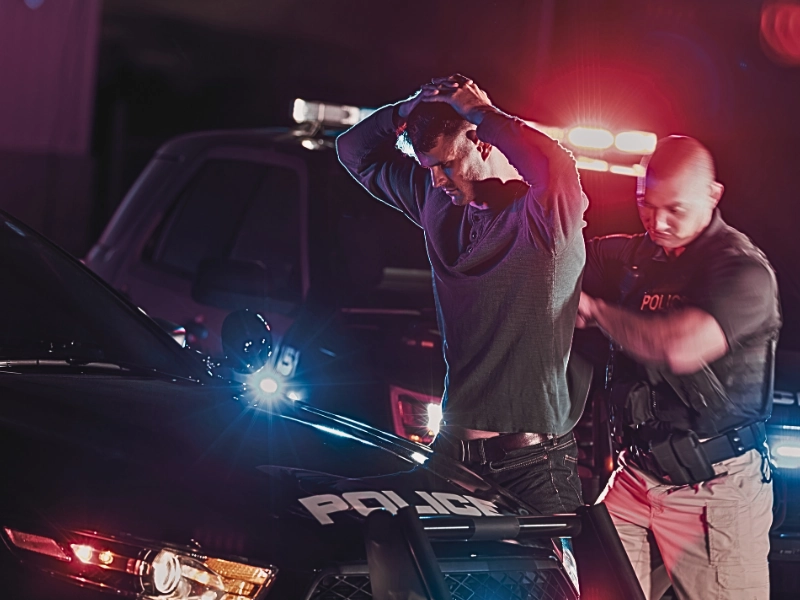In 1911, the Minnesota Legislature criminalized DWI, making it a misdemeanor charge to drive while “in an intoxicated manner”. It wasn’t until 1917, however, that the blood-alcohol concentration (BAC) level was set. At that time, it was perfectly legal for a driver to operate a vehicle with a BAC of up to 0.15. Thankfully, a lot has changed in the last 104 years when it comes to DWI law.
(Article continues below infographic)
The evolution of DWI laws, in conjunction with efforts of numerous organizations and law enforcement officers, has proven to be effective to help keep Minnesota roadways safe and free from intoxicated drivers. While increased enforcement of DWI laws and enhanced education have made significant improvements to the safety of our streets and highways, resulting in a 25 percent decrease in DWI related fatalities, much work still needs to be done. With 88 fatalities caused by intoxicated drivers in 2014 alone, and approximately 25,260 drivers having been arrested for driving while intoxicated in the last year, the number of DWI occurrences is still unacceptable.
Table of Contents
How DWI Laws in Minnesota Have Changed Over the Years
Significant changes to Minnesota’s DWI laws include:
- In 1971, administrative driver’s license sanctions were attached to DWIs when the driver had a BAC of 0.10 or higher.
- In 1988, license plates of DWI offenders began being impounded.
- In 1989 it became a criminal offense for a driver to refuse a test for their level of intoxication.
- In 2001, felony level DWI penalties were established
- In 2004, the alcohol concentration level was lowered to 0.08.
- In 2015, it became a gross misdemeanor for a first time offender to operate a vehicle with an alcohol concentration level of 0.16.
BAC Levels and the Changing Laws in Minnesota
While the current level for DWI in Minnesota is 0.08, motorists can actually be arrested for driving with a BAC that is much lower. The average BAC for drivers arrested for a DWI was 0.15 in 2014, and the average blood-alcohol concentration level for intoxicated drivers who were involved in fatal accidents was an alarming 0.19. Disturbingly, one out of every seven Minnesota drivers is arrested for DWI at least once. While nearly 6 out of every 10 DWI offenders are first-time offenders, the state of Minnesota has the highest repeat offender rate in the nation at just over 40 percent.
In August of 2015, Minnesota Legislature made it a gross misdemeanor for drivers to operate a motor vehicle with a BAC of 0.16 or higher. The stricter law is still twice the legal limit for a misdemeanor DWI, but 0.04 percentage points lower than the previous level for a gross misdemeanor. While the change may not seem like much, when one considers the statistics from previous years, the lower threshold could result in an estimates 3,000 additional gross misdemeanor DWIs annually- a 71 percent increase. Not only could a gross misdemeanor conviction result in a 90-day jail sentence, it could triple the fine to up to $3,000 and could mean stiffer penalties for any additional DWI convictions.
While some defenders believe that the lower threshold is too harsh for first-time offenders who may have consumed a little too much at a wedding party or other event, thus making a one time mistake, it is important to remember how that single mistake could potentially have affected their lives and the lives of other motorists on the road. With an average death toll of 99 people per year, and an estimated 2,440 injuries being caused by alcohol-related accidents, Nancy Johnson, a lobbyist with Minnesotans for Safe Driving feels that the lower threshold will make the roads safer for everyone involved.
The Cost of a DWI in Minnesota
While the penalty for driving while intoxicated can vary with each case, a first time offender With a blood-alcohol concentration level of less than 0.16 percent will typically lose his or her driver’s license for 30 day to a year, face fines of up to $1,000, and could even face jail time. While a second or third DWI offense can cost offenders even more money and result in longer jail terms, an offender who is convicted of DWI four or more times in a ten year period will face extensive fines, as well as a felony charge that could mean up to 7 years in prison.
When one considers court costs, increased vehicle insurance premiums, and legal fees, an offense could cost an intoxicated driver tens of thousands of dollars. Add in medical expenses for DWI related injuries, lost time from work, and property damages and the costs could soar much higher. In 2013, DWI related traffic accidents in the state of Minnesota cost a whopping $204 million in property damage, medical expenses, and lost productivity.






